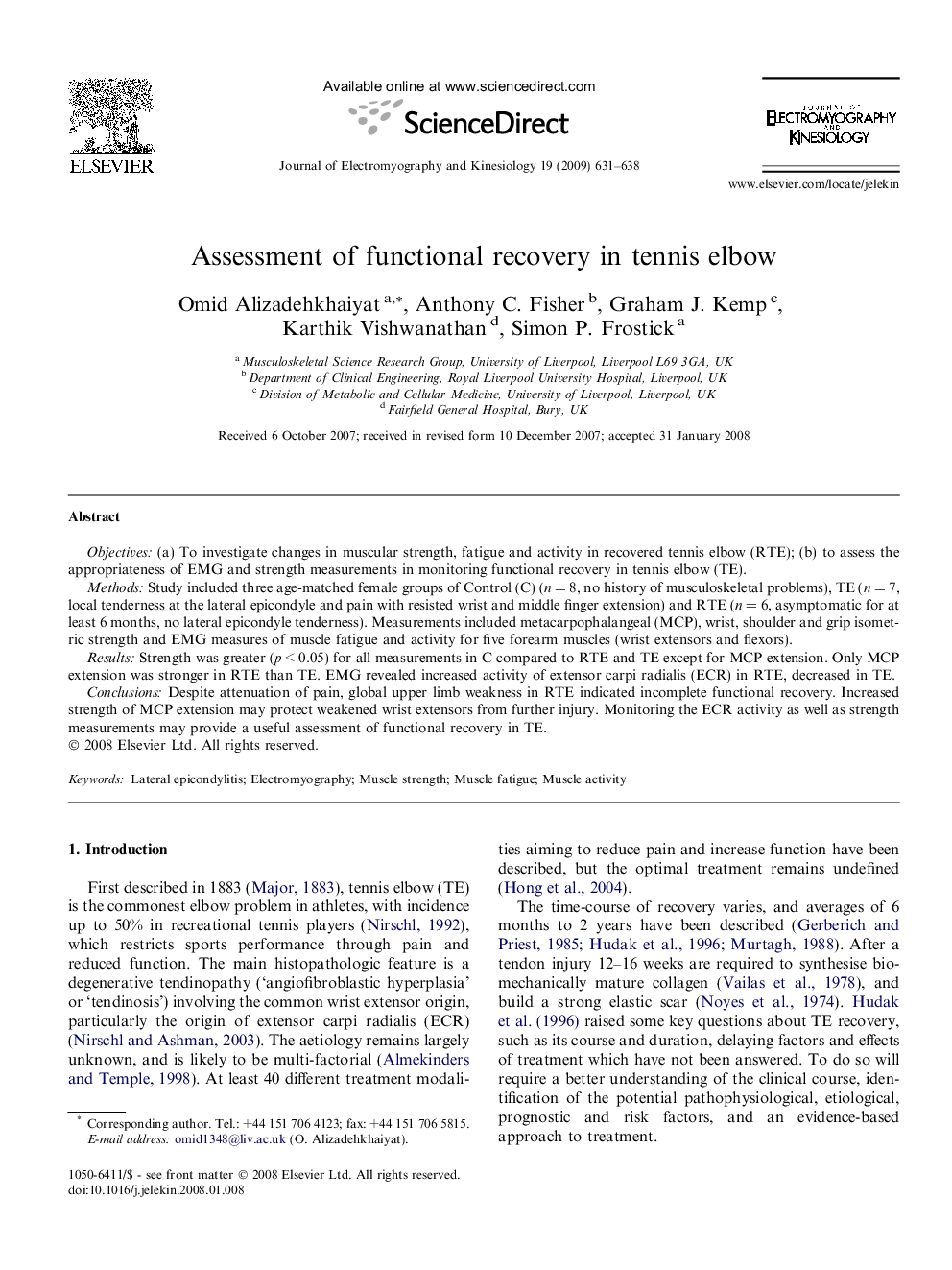| Article ID | Journal | Published Year | Pages | File Type |
|---|---|---|---|---|
| 4065452 | Journal of Electromyography and Kinesiology | 2009 | 8 Pages |
Objectives: (a) To investigate changes in muscular strength, fatigue and activity in recovered tennis elbow (RTE); (b) to assess the appropriateness of EMG and strength measurements in monitoring functional recovery in tennis elbow (TE).Methods: Study included three age-matched female groups of Control (C) (n = 8, no history of musculoskeletal problems), TE (n = 7, local tenderness at the lateral epicondyle and pain with resisted wrist and middle finger extension) and RTE (n = 6, asymptomatic for at least 6 months, no lateral epicondyle tenderness). Measurements included metacarpophalangeal (MCP), wrist, shoulder and grip isometric strength and EMG measures of muscle fatigue and activity for five forearm muscles (wrist extensors and flexors).Results: Strength was greater (p < 0.05) for all measurements in C compared to RTE and TE except for MCP extension. Only MCP extension was stronger in RTE than TE. EMG revealed increased activity of extensor carpi radialis (ECR) in RTE, decreased in TE.Conclusions: Despite attenuation of pain, global upper limb weakness in RTE indicated incomplete functional recovery. Increased strength of MCP extension may protect weakened wrist extensors from further injury. Monitoring the ECR activity as well as strength measurements may provide a useful assessment of functional recovery in TE.
